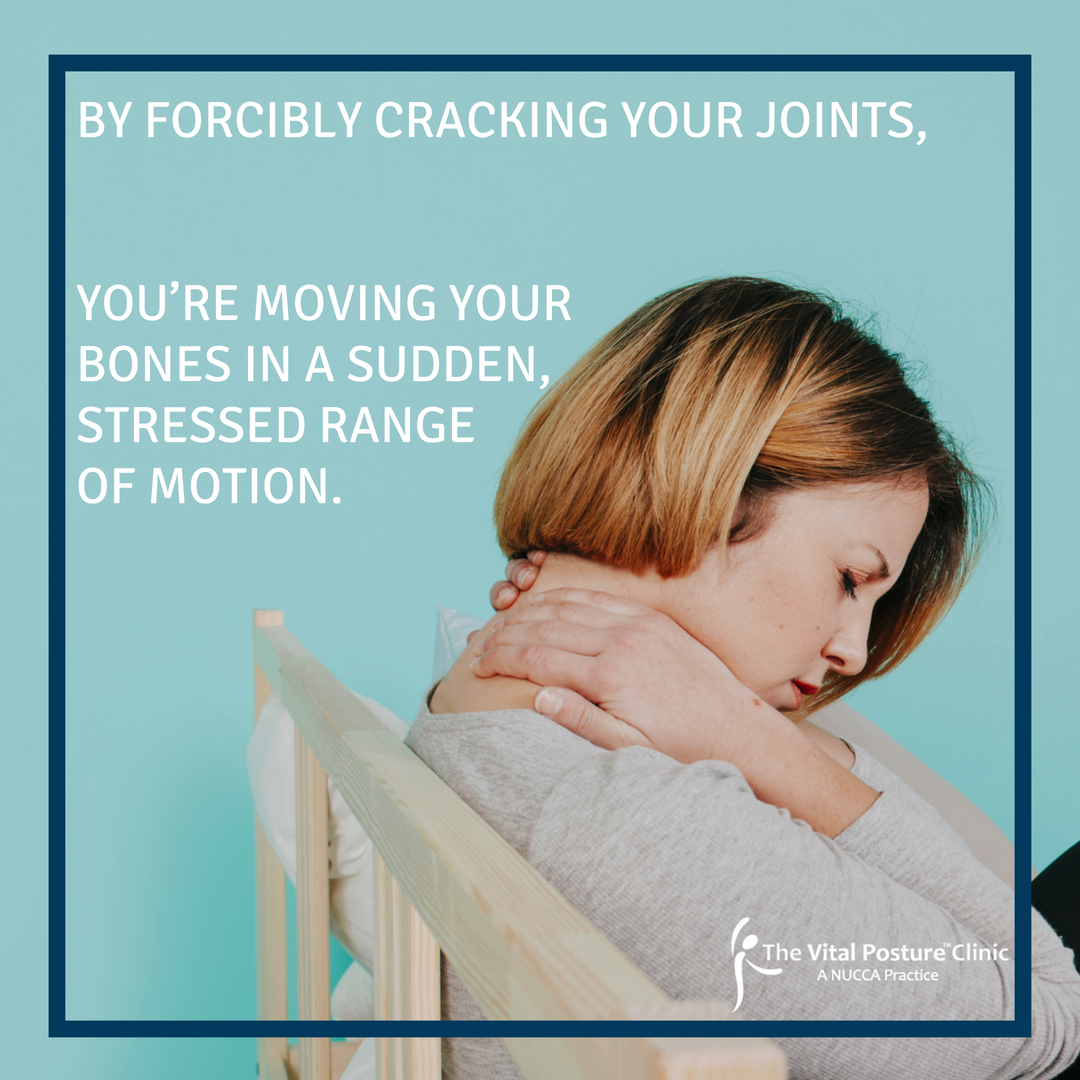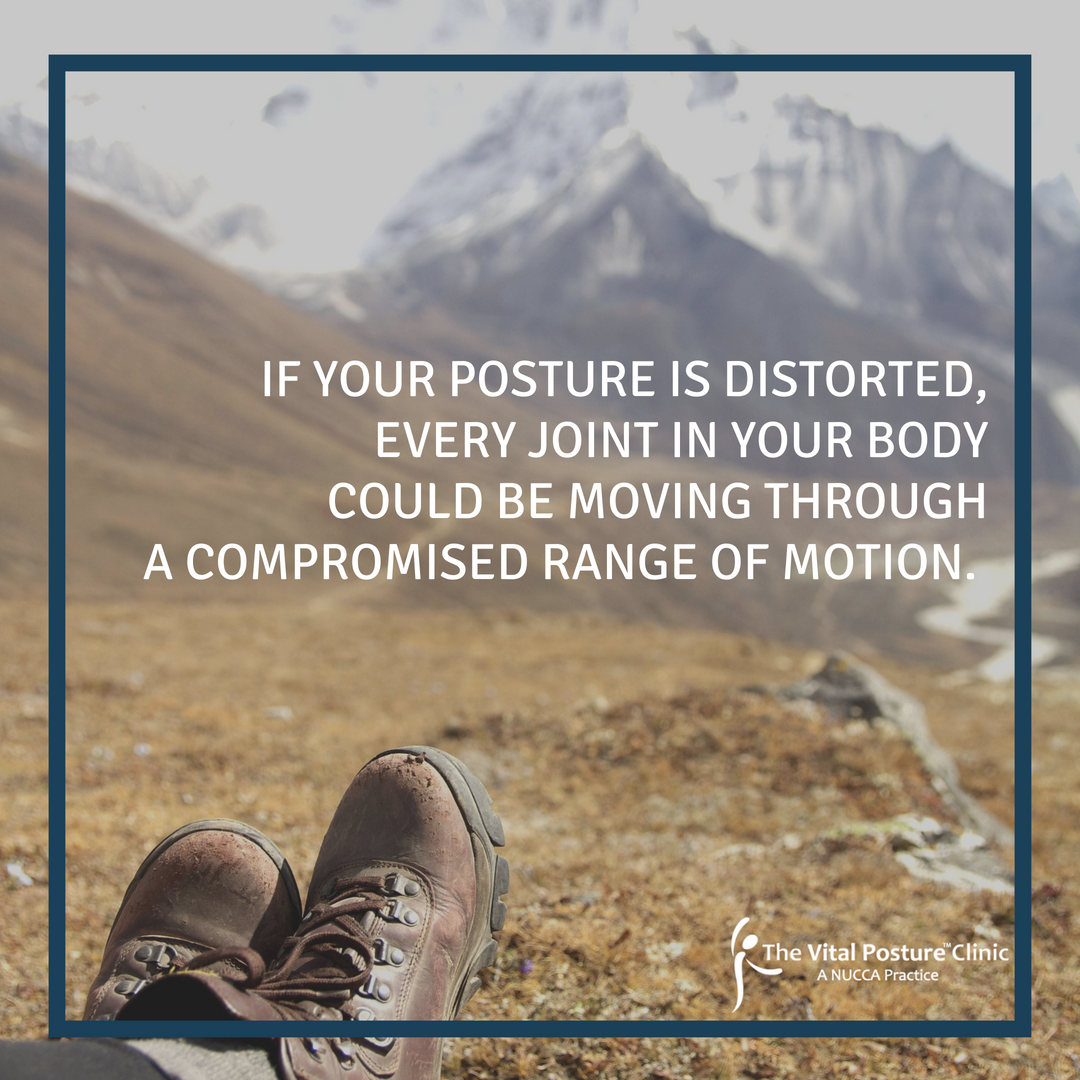
If you crack your neck from time to time, you’re not alone! You know just how good it can feel to relieve that aching stiffness.
We see many people who habitually crack their joints, from their knuckles and toes to their hips and ankles. Any joint can be popped or cracked and provide a feeling of instant relief.
However, the grim truth behind needing to frequently crack your joints and neck indicates that there is an underlying problem.
By answering this frequently asked question about neck cracking, we hope to raise awareness of the stressors contributing to the tension or stiffness that’s urging you to crack it in the first place. We’ll cover how this can have an impact on your other joints, and we’ll share some potential solutions.

Dr. Jeffrey Scholten
NUCCA Chiropractic
The Vital Posture™Clinic
Calgary, Canada
What happens when you crack your neck?
Neck cracking is the act of popping or cracking your neck when a ‘kink’ is felt. A sore or stiff neck can be the result of sitting in a rigid pose for too long or craning your neck too much, causing a buildup of pressure in the joints.
Most of us know the feeling of a joint cracking. This can happen regularly throughout our lives, and the release of pressure often feels good leading most people to assume that it’s only natural. Many begin to believe they actually need to crack their neck to relax or ease their neck pain, and many also assume that the sound is created by ligaments popping, or cartilage moving against cartilage and releasing tension. This is incorrect.
The problem lies in your joints
Your joints and bones are lubricated by a fluid which contains carbon dioxide, oxygen, and nitrogen gases. Contrary to popular belief, the real reason behind why you hear that ‘pop’ sound is actually due to the gas bubbles in your joints being released.
The force you put into your neck to make it crack results in the release of these gases—this makes the ‘pop’ or ‘crack’ sound that you hear.
When you crack your neck or any other parts of your body due to an ache or stiffness, you are releasing gas bubbles when you temporarily relax your joints and muscles.
Cracking your neck, or any other joint, may seem harmless, but by forcibly cracking your joints you’re moving your bones in a sudden, stressed range of motion and you could create more problems than you solve. Regularly cracking your neck can quickly throw your spinal alignment off balance and lead to potential further issues for the rest of your body.

Cracking your own neck creates temporary relief, and you’re quite likely to crack it again in the course of the day or hour depending on how sore or stiff you feel. I’ve had patients start care who were cracking their own neck every couple of minutes to try and get relief from their neck discomfort.
Neck cracking can contribute to the following conditions:
- pinched nerves
- increased stiffness and pain over time
- worsening of an already misaligned upper neck
- poor posture
You should see a NUCCA chiropractor or seek medical advice immediately if your self-manipulation causes:
- Unusual neck swelling
- Sharp or increased pain in your neck
- Decreased neck mobility
Neck cracking as a habit
Those who habitually crack their own neck don’t fix the underlying cause of their neck strain or soreness. They typically continue to experience neck pain and may even aggravate the condition.
The habit is cyclical. The more a joint stretches and relaxes, the stiffer and sorer the joint often becomes leading to more cracking and popping.
Most healthy necks do not need to be cracked
When a bone moves within its appropriate and optimal range of motion, you should never hear joints grinding or popping. In fact, it would be very difficult to forcibly ‘self-crack’ a healthy neck.
Misalignment, poor posture, and neck stiffness
If your posture is distorted, every joint in your body could be moving through a compromised range of motion.

Compensation by your muscle activity and postural alignment is not limited to the neck, but it travels up and down your body in complicated patterns. While compensation patterns are unique to everyone, the most common clinical signs and symptoms associated with muscle strain include:
Better alignment = less compensation
As chiropractors, our goal is to properly align the body. Proper alignment allows the joints to move optimally with the least stressed range of motion possible.Chiropractors at The Vital Posture™ Clinic are skilled in providing NUCCA upper cervical adjustments that are known to be safe. Since there are no abrupt movements in a NUCCA upper cervical adjustment, you can be confident that exacting attention is delivered through this corrective procedure.
Find neck pain relief
We use diagnostic tools to show exactly how and where a patient’s upper neck is misaligned. From there, the precise and unique corrective adjustment angle will be calculated for each particular case to gently bring the head and neck back into alignment.The patient will feel only a light pressure where the hand meets the neck. The intensity of the NUCCA adjustment is similar to having your pulse taken, in fact, most patients barely feel the adjustment at all.
Our doctors can also offer advice on how to help minimize your risk of future neck strains. They can provide many helpful tips on how you can maintain your adjustment and proper posture at home and at work.
At The Vital Posture™ Clinic, we work to align the head and neck and improve the symmetry throughout our patient’s bodies, relieving neck pain and pressure.
If you have neck stiffness and often crack your neck, something is wrong—it could be a sign of early joint degeneration, injury, or pinched nerves. Getting your neck assessed by a NUCCA chiropractor can help you better understand what is happening, and together you can create a plan to rejuvenate your health.
References:
Real-Time Visualization of Joint Cavitation
http://journals.plos.org/plosone/article?id=10.1371/journal.pone.0119470Chronic Neck Pain: Making the Connection Between Capsular Ligament Laxity and Cervical Instability
https://www.ncbi.nlm.nih.gov/pmc/articles/PMC4200875/



